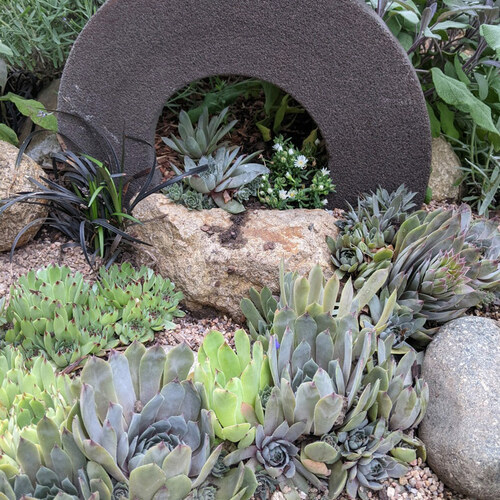
Hi GPODers!
Today we’re heading to the Rockies and checking out a sensational alpine garden. However, Holly Culp didn’t always garden at high altitudes and a lot needed to learn a lot to transition from lush cottage gardens in Ohio to a xeric design in Colorado:
I am originally from Ohio, where I had three quarters of an acre of cottage style gardens. My color scheme featured white, pink, blue and purple flowers with a mix of sun and shade loving plants. I prayed for the sun to shine and the rain to stop but my plants always thrived!
Now I live with my husband in Denver, Colorado. I’ve switched to a yellow, orange, and purple palette of alpine, native and xeric plants. A totally different style of gardening. I pray for rain, hope the hail storms miss our house ,and am thankful for the occasional cloudy day!
Extreme heat and lack of rainfall have caused me to lose more plants than I have kept alive, so I have gotten into propagation from seeds and cuttings which I love. Alpine plants are also difficult to find, so propagation offers me a wide variety of plant options. My seed source for alpines is the North American Rock Garden Society and our local chapter offers amazing sales of hard to find plants. For xeric plants I have found that Plant Select, an organization that promotes plants that thrive in challenging and dry conditions, to be a valuable resource.
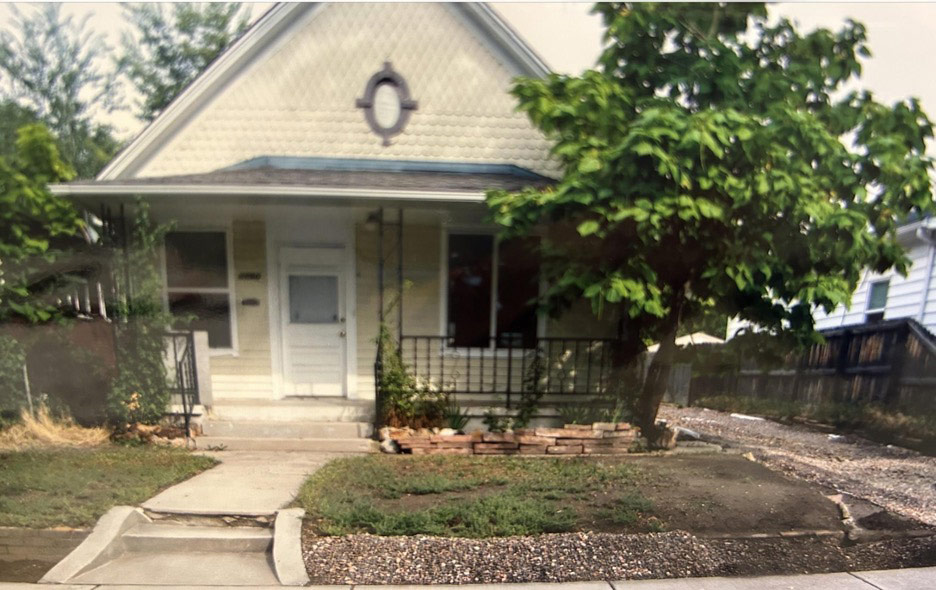 This was what the yard looked like when I moved in. My first project was removing all the “lawn”. A new color scheme made the house a good backdrop for the gardens which fill our front and back yard.
This was what the yard looked like when I moved in. My first project was removing all the “lawn”. A new color scheme made the house a good backdrop for the gardens which fill our front and back yard.
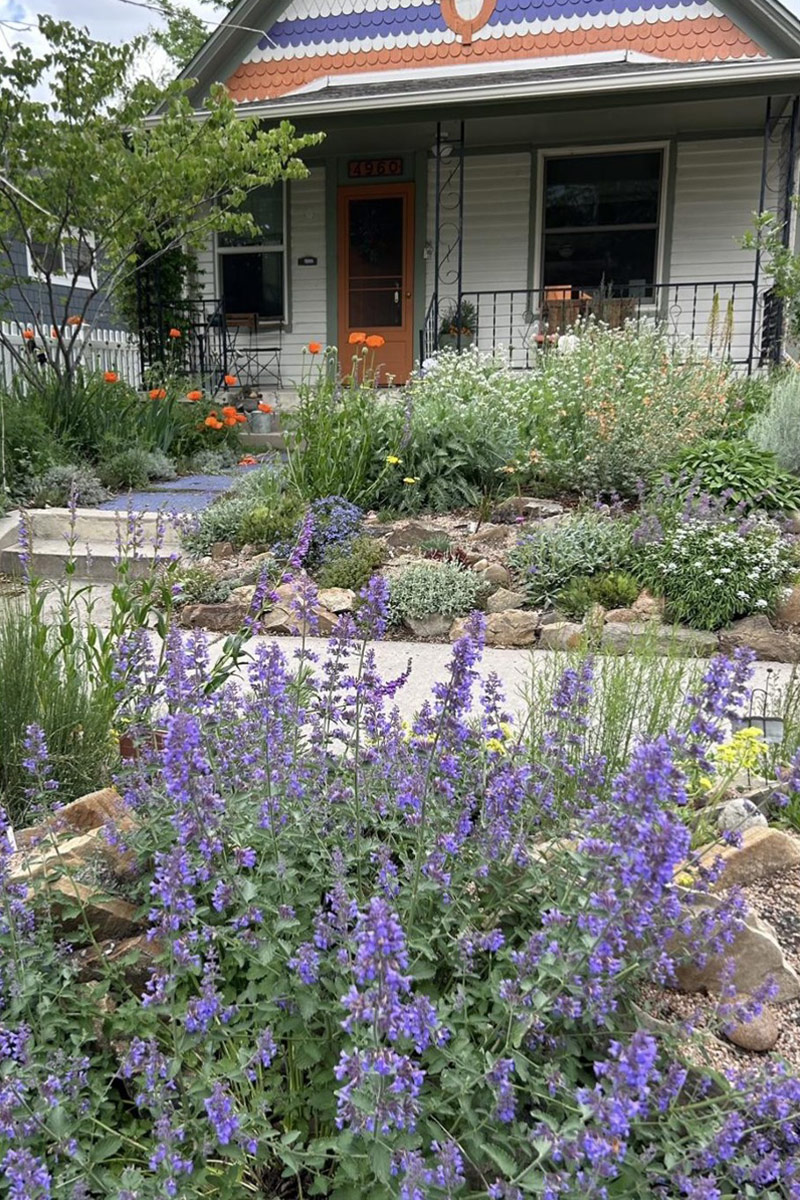 Spring blooming ‘Walker’s Low’ catmint (Nepeta × faassenii ‘Walker’s Low’, Zones 3–10) and oriental poppies (Papaver orientale, Zones 3–8) steal the show.
Spring blooming ‘Walker’s Low’ catmint (Nepeta × faassenii ‘Walker’s Low’, Zones 3–10) and oriental poppies (Papaver orientale, Zones 3–8) steal the show.
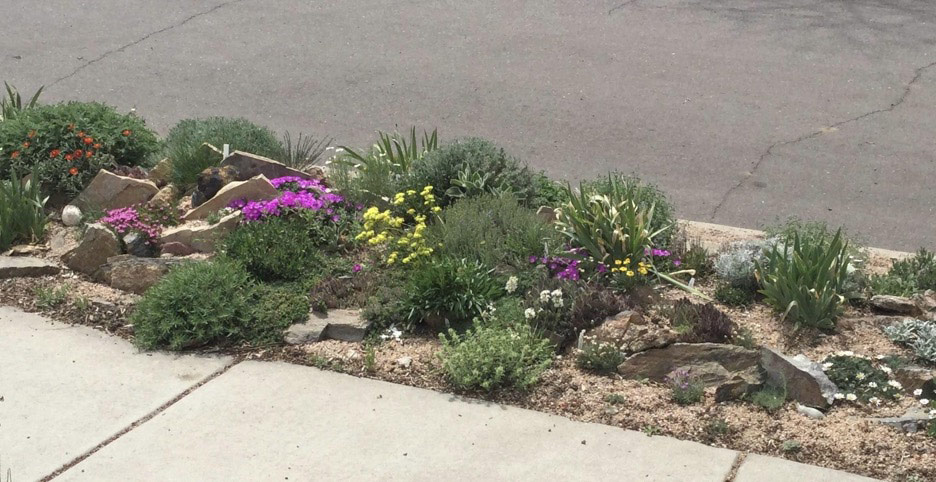 I converted the “Devil’s strip” into a crevice garden for alpine plants. The display in this bed starts in March. The rocks allow the plants to put down deep roots which help sustain them during hot and dry summers.
I converted the “Devil’s strip” into a crevice garden for alpine plants. The display in this bed starts in March. The rocks allow the plants to put down deep roots which help sustain them during hot and dry summers.
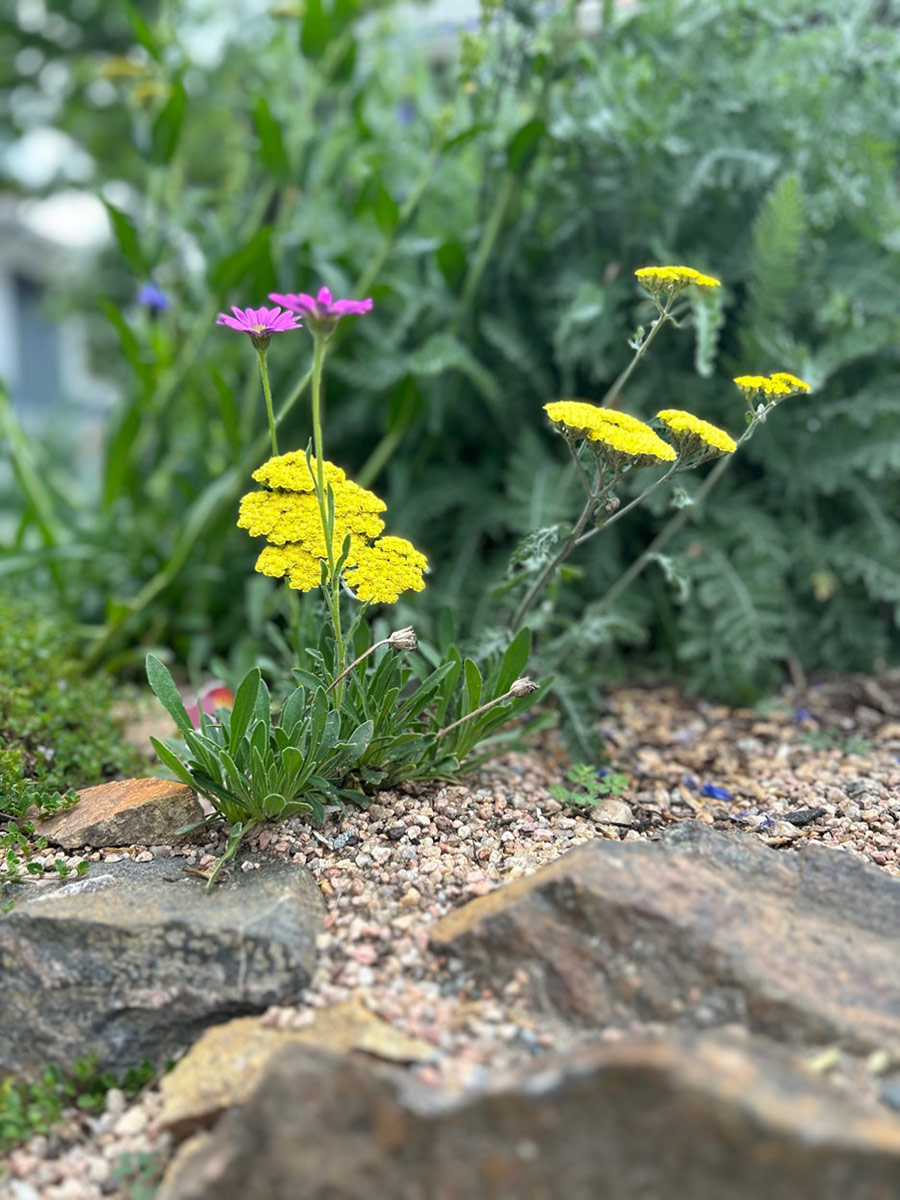 Sometimes Mother Nature does it best. Yellow yarrow (Eriophyllum confertiflorum, Zones 6–11) and Purple Mountain® sun daisies (Osteospermum barberiae var. compactum ‘P005S’, Zones 5–9 or as an annual) are a winning combination.
Sometimes Mother Nature does it best. Yellow yarrow (Eriophyllum confertiflorum, Zones 6–11) and Purple Mountain® sun daisies (Osteospermum barberiae var. compactum ‘P005S’, Zones 5–9 or as an annual) are a winning combination.
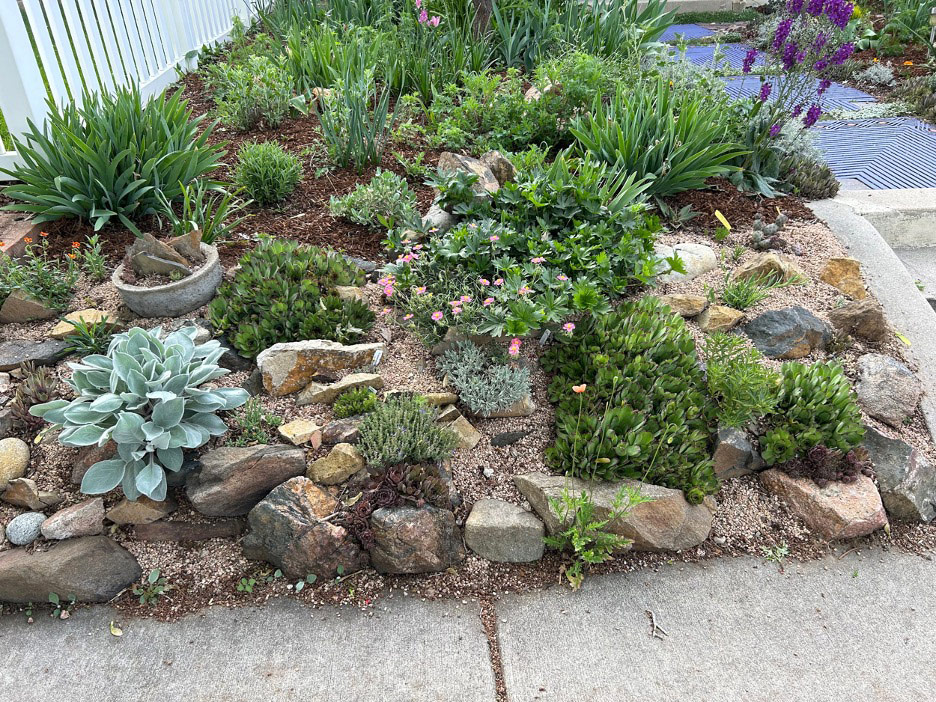 Verbascum offers up seedlings every year and adds beautiful purple color. The silver plant on the left is woolly hawkweed (Hieracium tomentosum, Zones 6–9) which also reseeds.Both are tolerant of dry conditions. We made the sidewalk from old cast iron tree grates which I then painted to match the house colors.
Verbascum offers up seedlings every year and adds beautiful purple color. The silver plant on the left is woolly hawkweed (Hieracium tomentosum, Zones 6–9) which also reseeds.Both are tolerant of dry conditions. We made the sidewalk from old cast iron tree grates which I then painted to match the house colors.
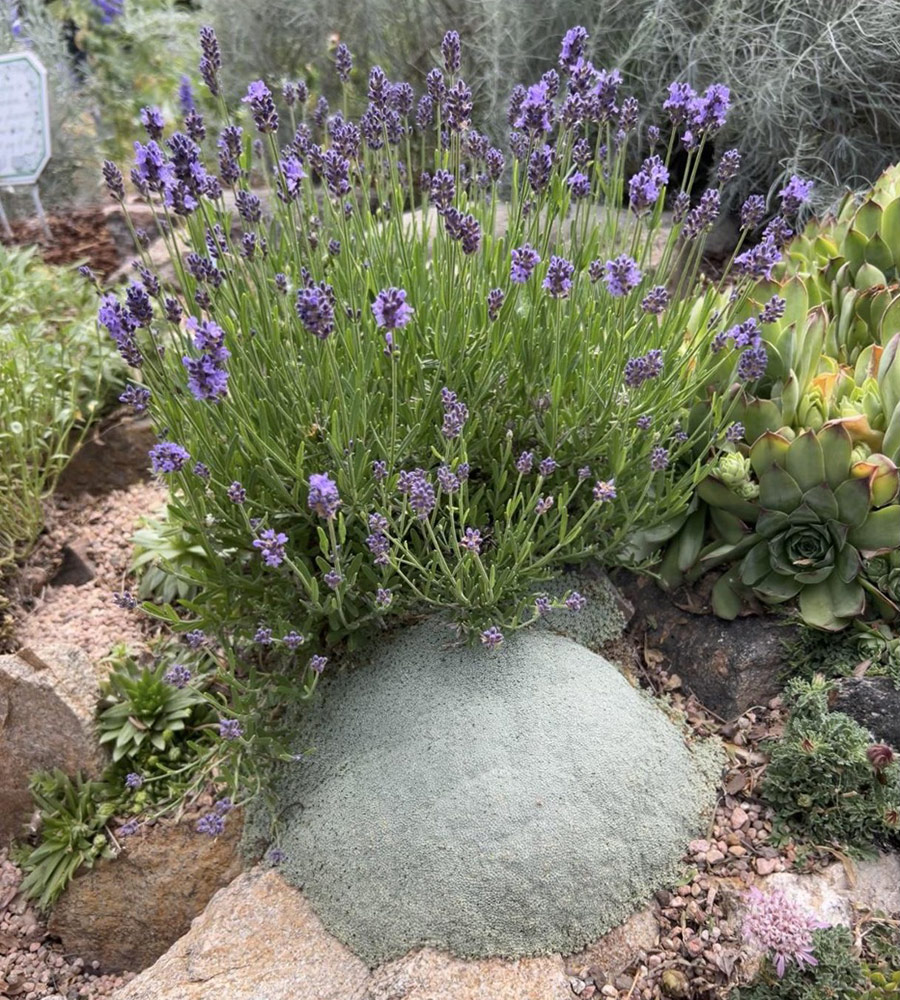 This Spanish sandwort (Arenaria alfacarensis, Zones 5–8) is one of my favorites and gets the most looks from people passing by. The ‘Thumbelina Leigh’ lavender (Lavandula angustifolia ‘Thumbelina Leigh’, Zones 5–9) is a wonderful petite cultivar. Both of these plants require minimal water so they are a good choice for xeric gardens.
This Spanish sandwort (Arenaria alfacarensis, Zones 5–8) is one of my favorites and gets the most looks from people passing by. The ‘Thumbelina Leigh’ lavender (Lavandula angustifolia ‘Thumbelina Leigh’, Zones 5–9) is a wonderful petite cultivar. Both of these plants require minimal water so they are a good choice for xeric gardens.
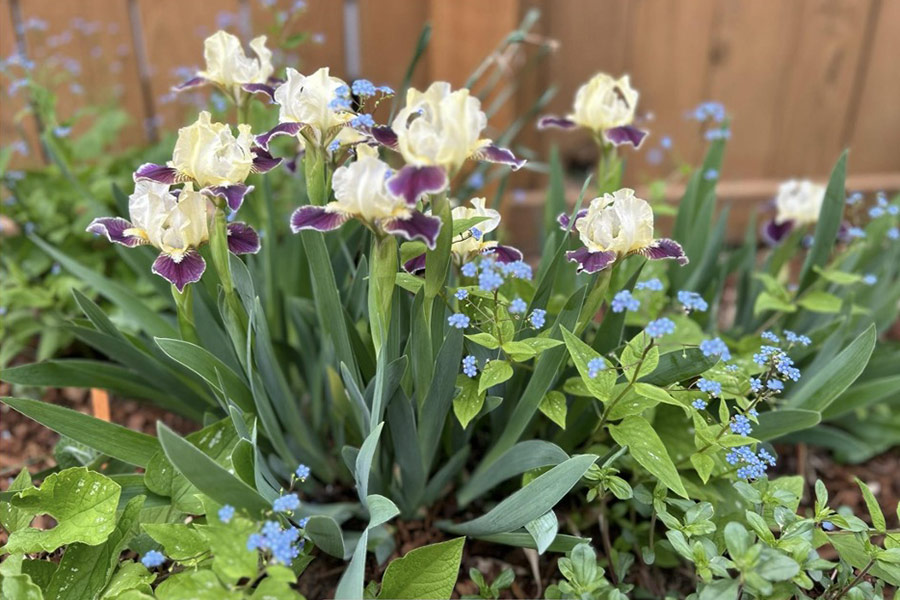 A semi dwarf iris and brunnera in the spring garden.
A semi dwarf iris and brunnera in the spring garden.
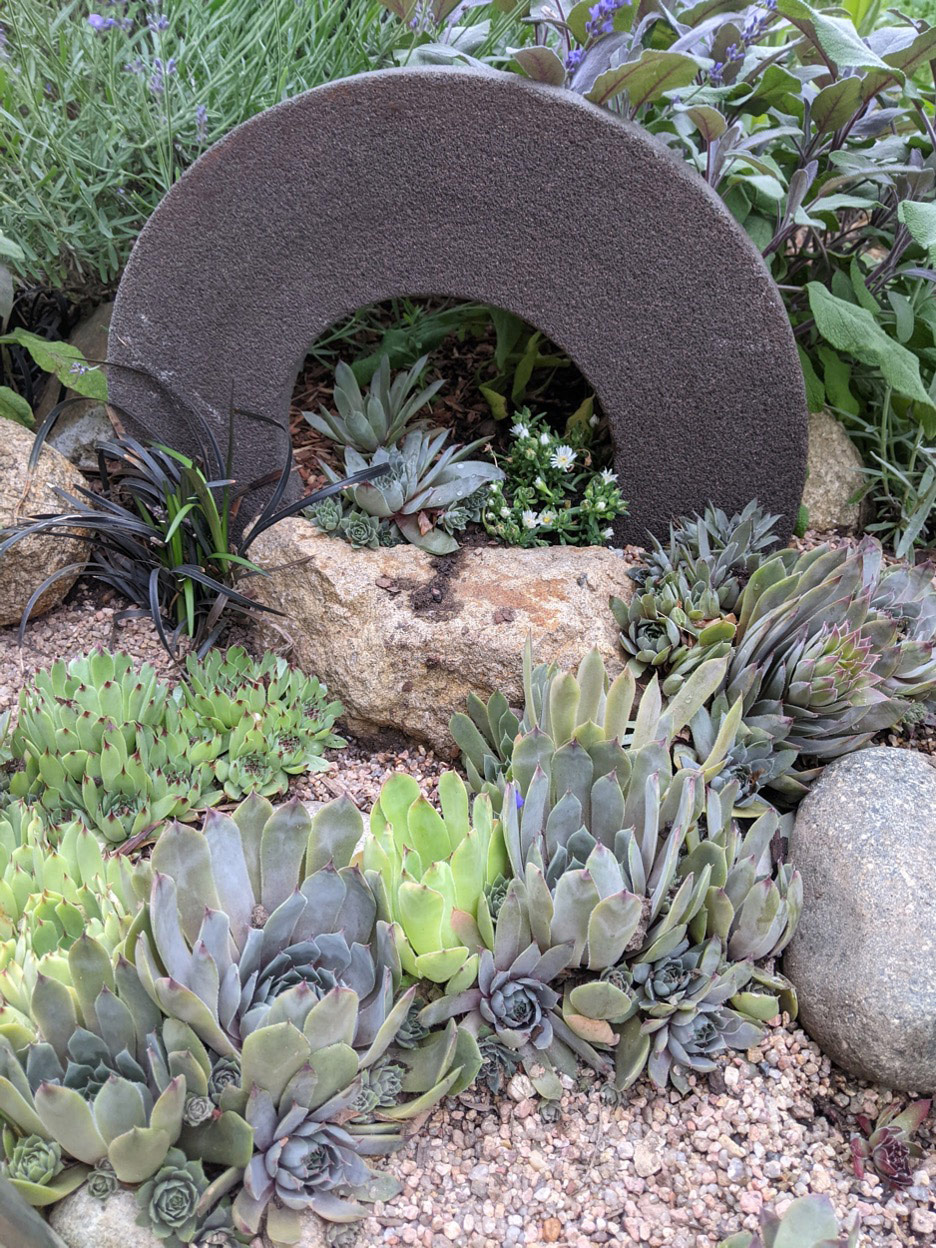 I used an old grindstone for a backdrop for sempervivums and black mondo grass (Ophiopogon planiscapus ‘Nigrescens’ , Zones 6–11).
I used an old grindstone for a backdrop for sempervivums and black mondo grass (Ophiopogon planiscapus ‘Nigrescens’ , Zones 6–11).
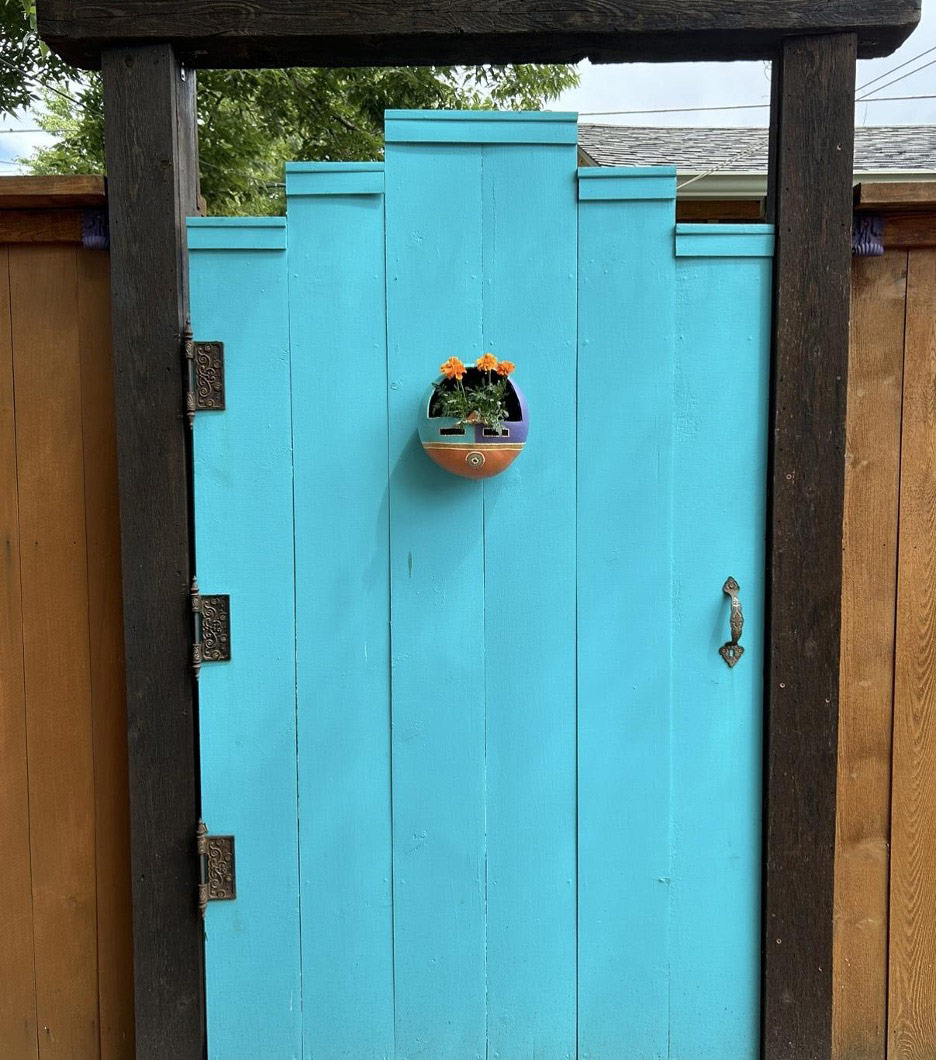 The gate and fence hide trash cans and a compost barrel. I made the flower pot from a gourd that I grew. The orange marigolds are a good contrast to the bright blue gate.
The gate and fence hide trash cans and a compost barrel. I made the flower pot from a gourd that I grew. The orange marigolds are a good contrast to the bright blue gate.
Wow, Holly—I absolutely love how you embraced your new climate and conditions to create a garden that is the epitome of alpine beauty! Without your preamble I would have assumed you gardened in Denver your whole life.
Have a garden you’d like to share?
Have photos to share? We’d love to see your garden, a particular collection of plants you love, or a wonderful garden you had the chance to visit!
To submit, send 5-10 photos to [email protected] along with some information about the plants in the pictures and where you took the photos. We’d love to hear where you are located, how long you’ve been gardening, successes you are proud of, failures you learned from, hopes for the future, favorite plants, or funny stories from your garden.
Have a mobile phone? Tag your photos on Facebook, Instagram or Twitter with #FineGardening!
Do you receive the GPOD by email yet? Sign up here.
Fine Gardening Recommended Products
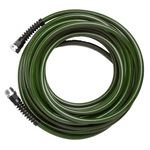
– Slim, lightweight design, is made with toxin-free polyurethane and utilizes industrial grade, lead-free fittings
– 3 Pounds
– 1200″L x 0.43″W
– Manufactured in the USA
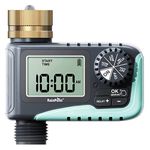
RAINPOINT Sprinkler Timer with Brass Swivel
– Pure brass water inlet and metal thread can withstand up to 116psi.
– Built-in metal filter gaskets can prevent sediment and other larger particles
– Through the Sprinkler Timer program, you can set the start time, watering duration, and watering frequency

Gilmour 811673-1001 Sprinkler
– 43-ft. spray distance (up to 5, 800 sq. ft. coverage)
– Adjustable collar for partial- to full-circle coverage
– Dial precisely sets spray distance
– On/off switch eliminates trips from sprinkler to spigot
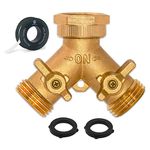
Morvat Heavy Duty Brass Y-Valve
– Instantly create two tap outlets with this ultra-durable Y hose splitter. The dual-valve design features built-in shut-off valves.
– Fitted with US Standard NH 3/4″ threads for use with most water source fittings
– Screw the 2 way splitter adapter by hand or wrench with the updated hexagonal top connection. The 360° rotatable swivel connection attaches to any water source.
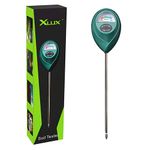
XLUX Soil Moisture Meter
– Large and clear dial, including ten scales, plug and read
– Simply insert the moisture meter into soil and you’ll get the test result instantly
– Single probe, less hurts to the roots, doesn’t dig up too much soil after test








